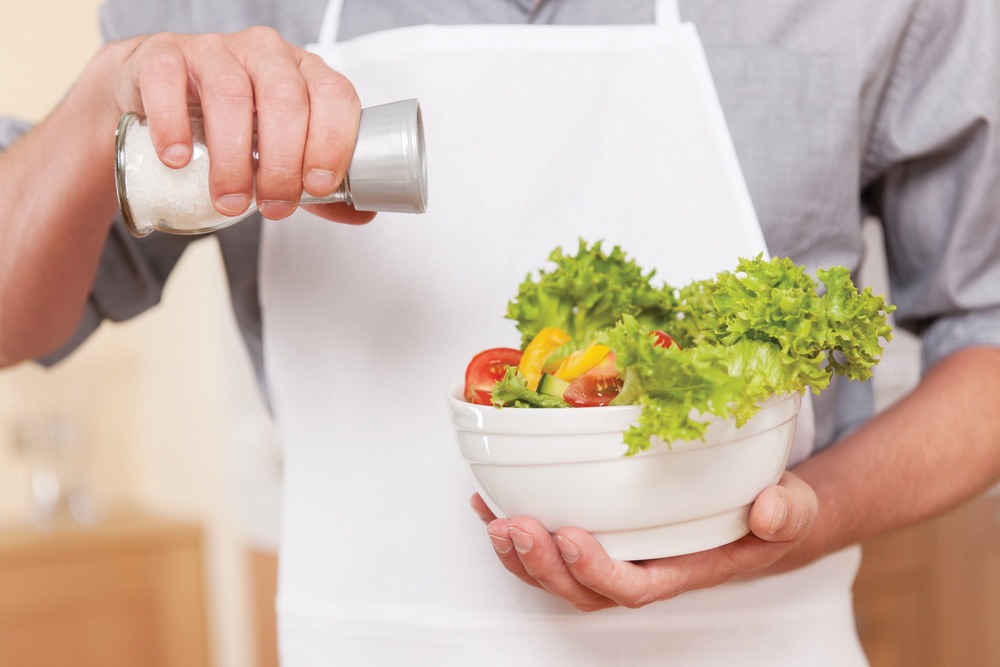Everyday Foods Add Up to Major Salt Problems
Ten food types, including bread, account for the higher risk of heart disease, stroke, the report says.
Americans still eat an excessive amount of salt, and a lot of it comes from dietary staples such as bread, poultry, cheese and pasta, U.S. health officials reported Tuesday.
A U.S. Centers for Disease Control and Prevention report said 90 percent of Americans consume too much salt on an every day.
Ten types of foods account for 44 percent of salt consumption, the CDC specialists said. These include rolls and bread; deli meats and cured meats; pizza; fresh and processed poultry; soups; cheeseburgers and other sandwiches; cheese; pasta dishes, for example, spaghetti with meat sauce; meat dishes such as meatloaf with tomato sauce; and salty snacks, for example, chips, pretzels, and popcorn.
Too much salt, the major source of dietary sodium, can raise blood pressure, which is connected to heart disease and stroke.
“Heart disease and stroke are leading causes of death in the United States and are to a great extent reliant on the high rate of high blood pressure, and something that is driving our blood pressure up is that most adults in this country drink or eat about twice the amount of sodium recommended,” CDC director Dr. Thomas Frieden said during a noon press conference Tuesday.
“Reducing sodium across the food supply can increase consumer choice, is feasible, it can save thousands of lives and billions of dollars in health care costs each year,” Frieden included.
As indicated by the report, reducing sodium by 25 percent in those 10 food types could help prevent 28,000 deaths every year and save $7 billion in medicinal care costs. The overall salt intake would decline by 10 percent.
Because some of these foods, for example, bread, are eaten several times each day, salt consumption includes, even though an individual serving is not high in sodium.
“Cooking fresh food at home is the great approach to lower sodium,” said Samantha Heller, a dietitian and clinical nutrition coordinator at the Center for Cancer Care at Griffin Hospital in Derby, Conn.
For their estimates, CDC specialists relied on data from a 2007-2008 nutrition study of more than 7,000 Americans aged 2 years and older.
The agents found that 65 percent of daily sodium comes from food bought in stores, and 25 percent from restaurant meals.
Excluding salt included at the table, the normal American consumes around 3,300 milligrams of sodium for every day — significantly more than the 2,300 milligrams recommended by the U.S. Dietary Guidelines.
For individuals more than 51 years old, black Americans, and those with high blood pressure, chronic kidney disease or diabetes, the recommendation is just 1,500 milligrams a day.
Manufacturers of processed foods and restaurants need to reduce salt content in their foods, the report stated.
The best approach to reducing your salt intake, the specialists said, is to eat more fresh or frozen fruits and vegetables without sauce and limit processed foods.
Heller suggested buying low-sodium foods, for example, no-sodium canned tomatoes and tomato sauce, and using less cheese, “which can be surprisingly high in sodium.”
It’s important to learn which foods are high in sodium and figure them into your day, and to check food labels when shopping, Heller said. Also, limit cold cuts and processed meats.
The report, titled Vital Signs: Food Categories Contributing the Most to Sodium Consumption—the United States, 2007-2008, is published in the CDC’s Morbidity and Mortality Weekly Report, Feb. 7 early release edition.



Facebook Comments